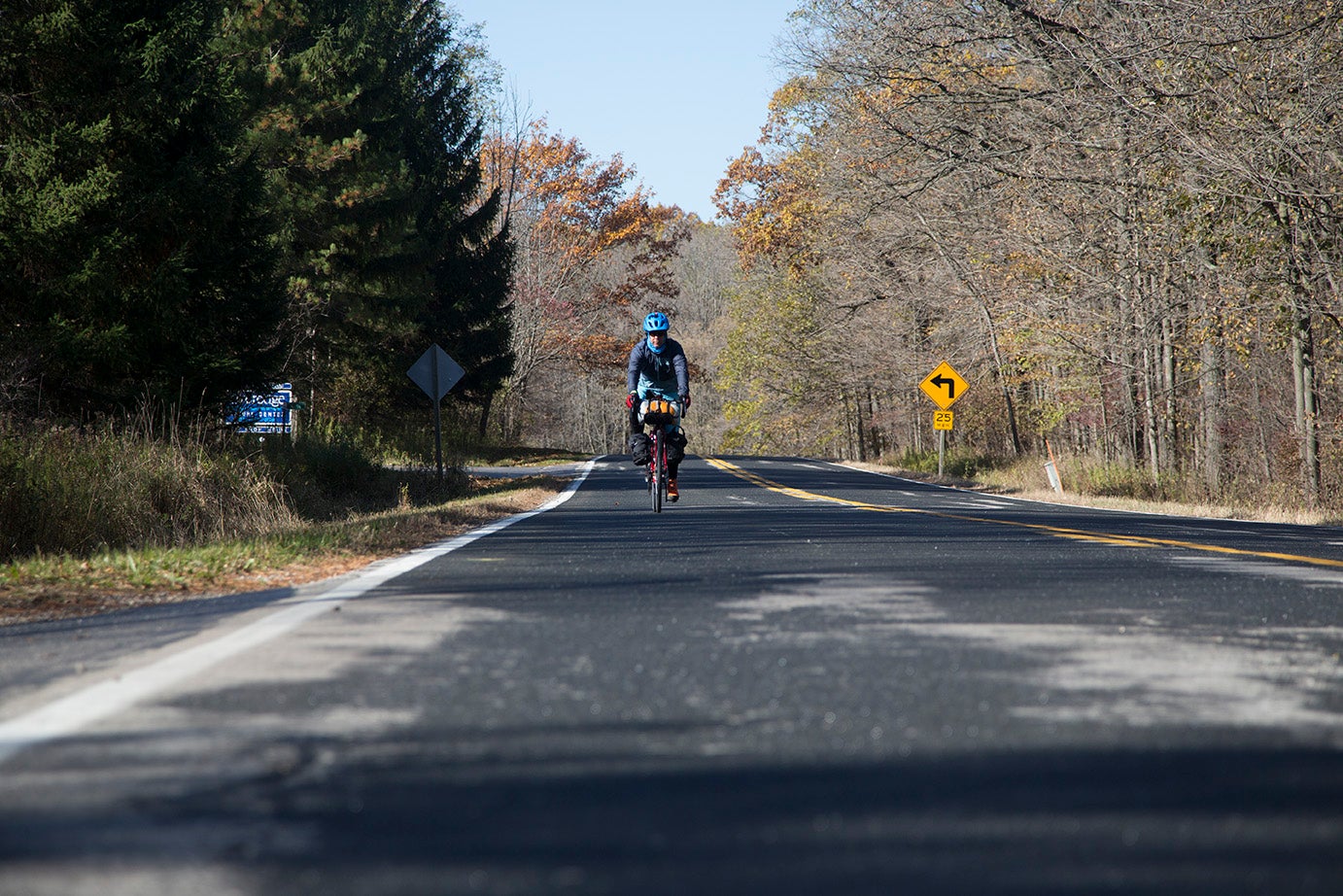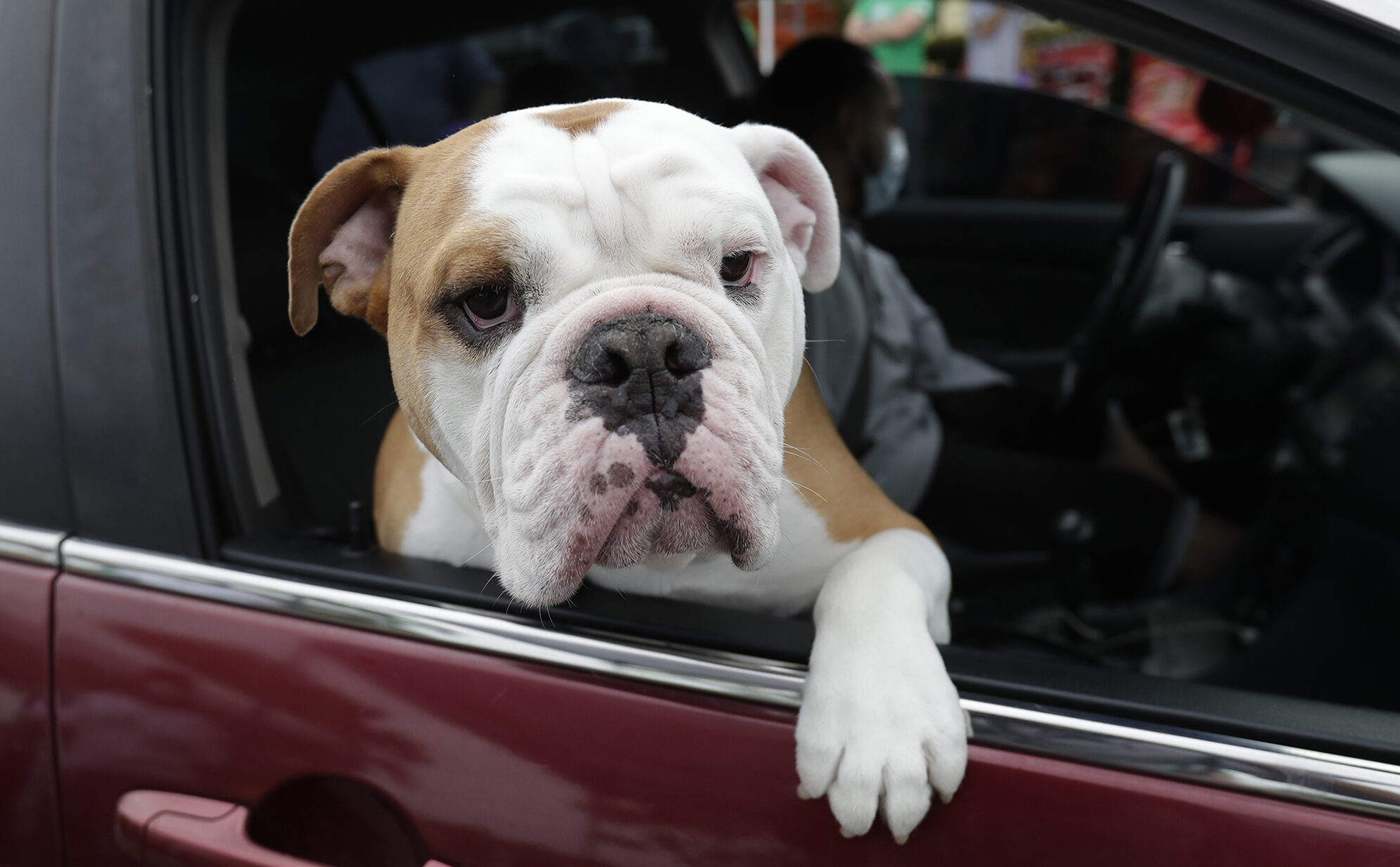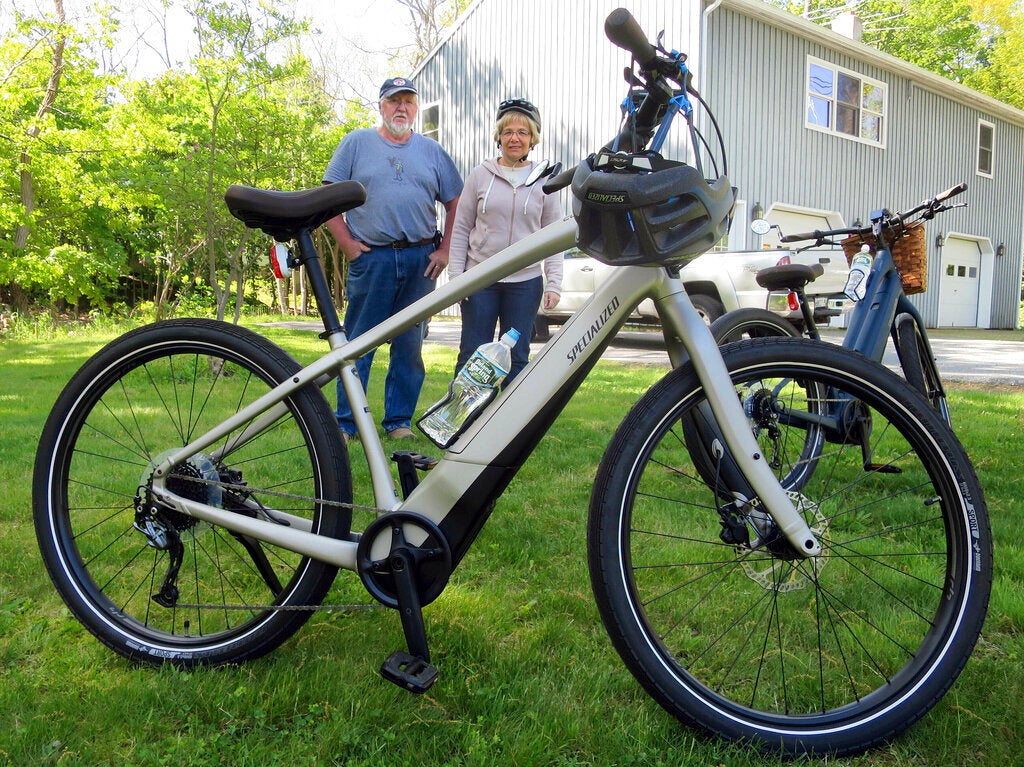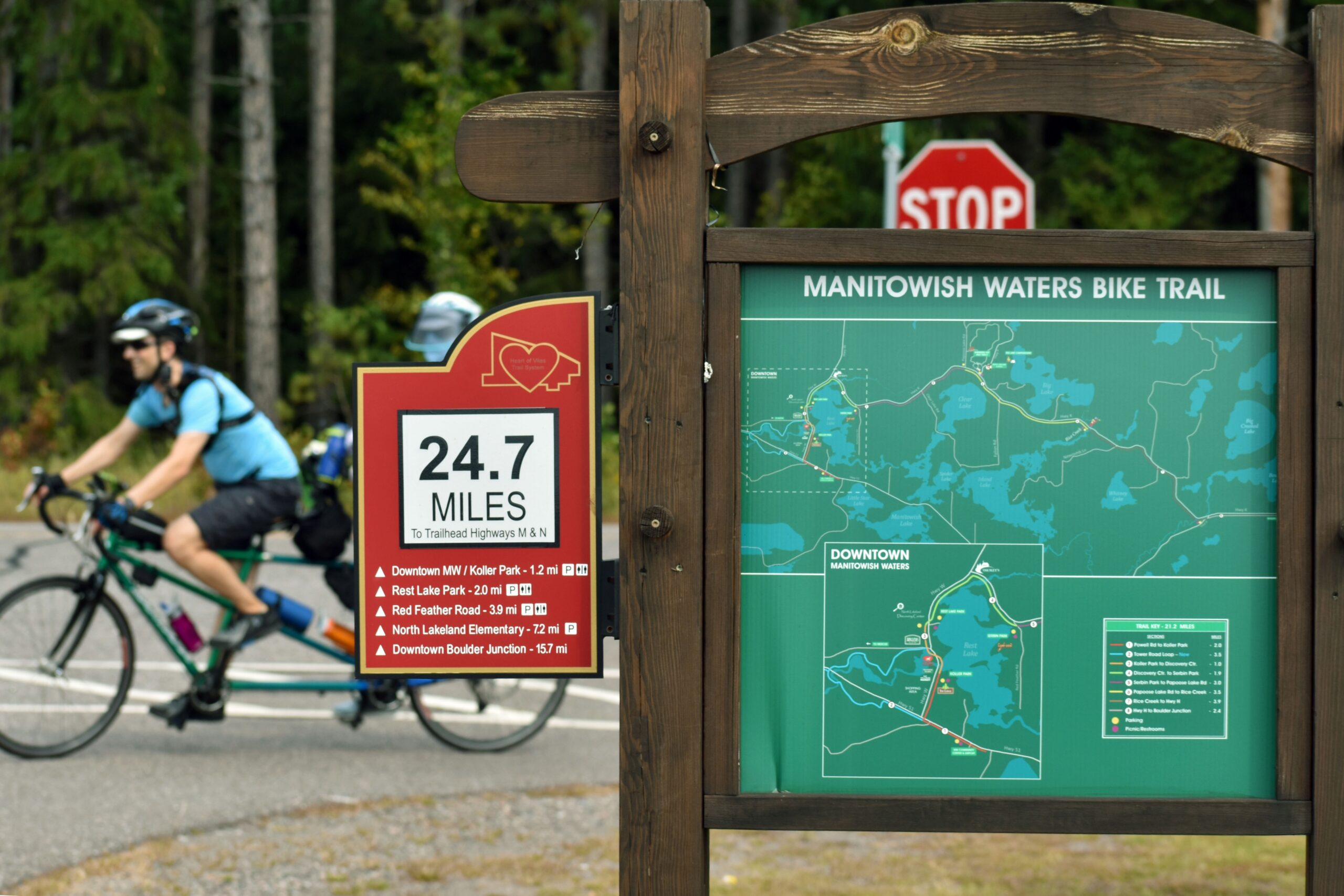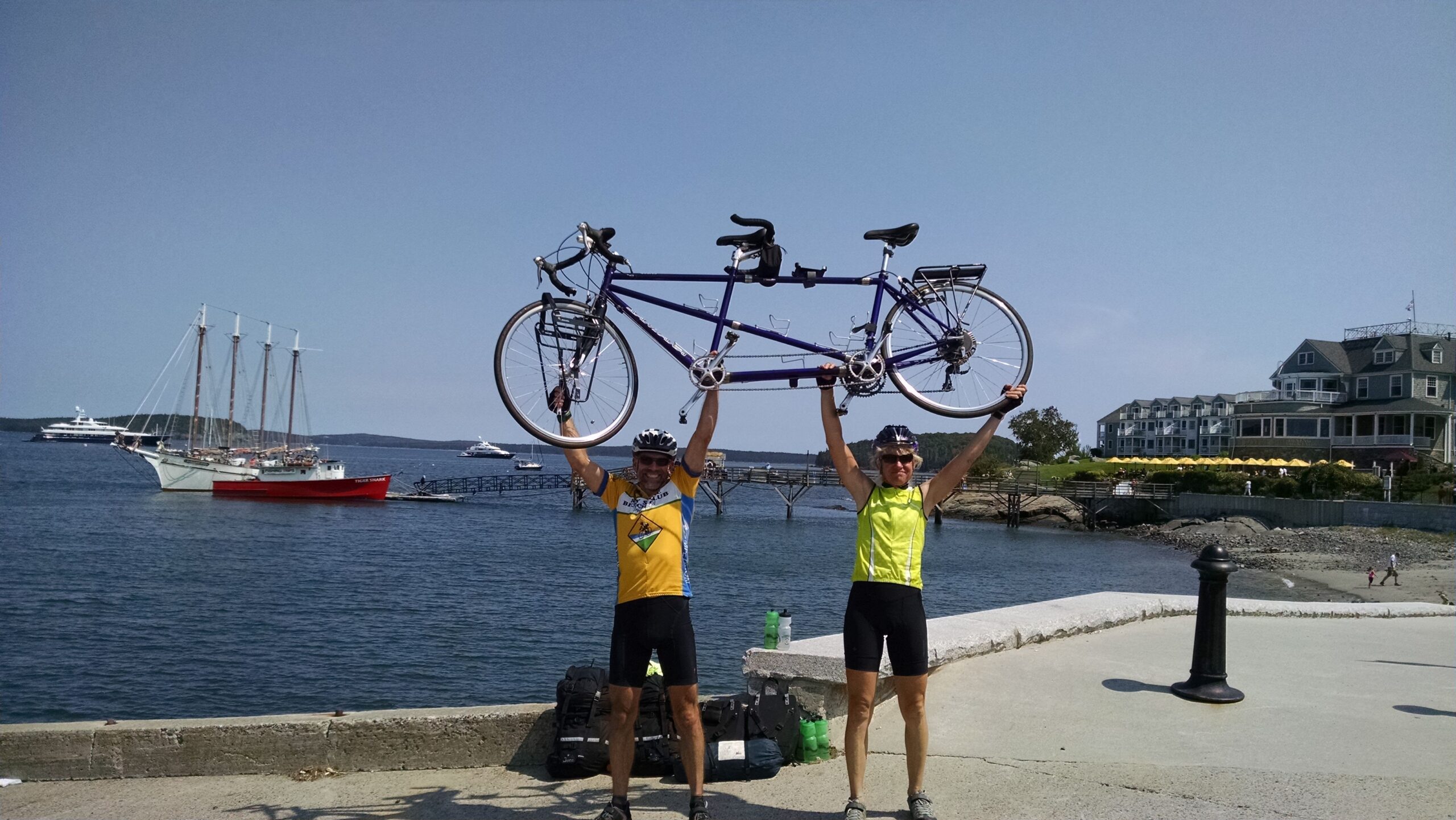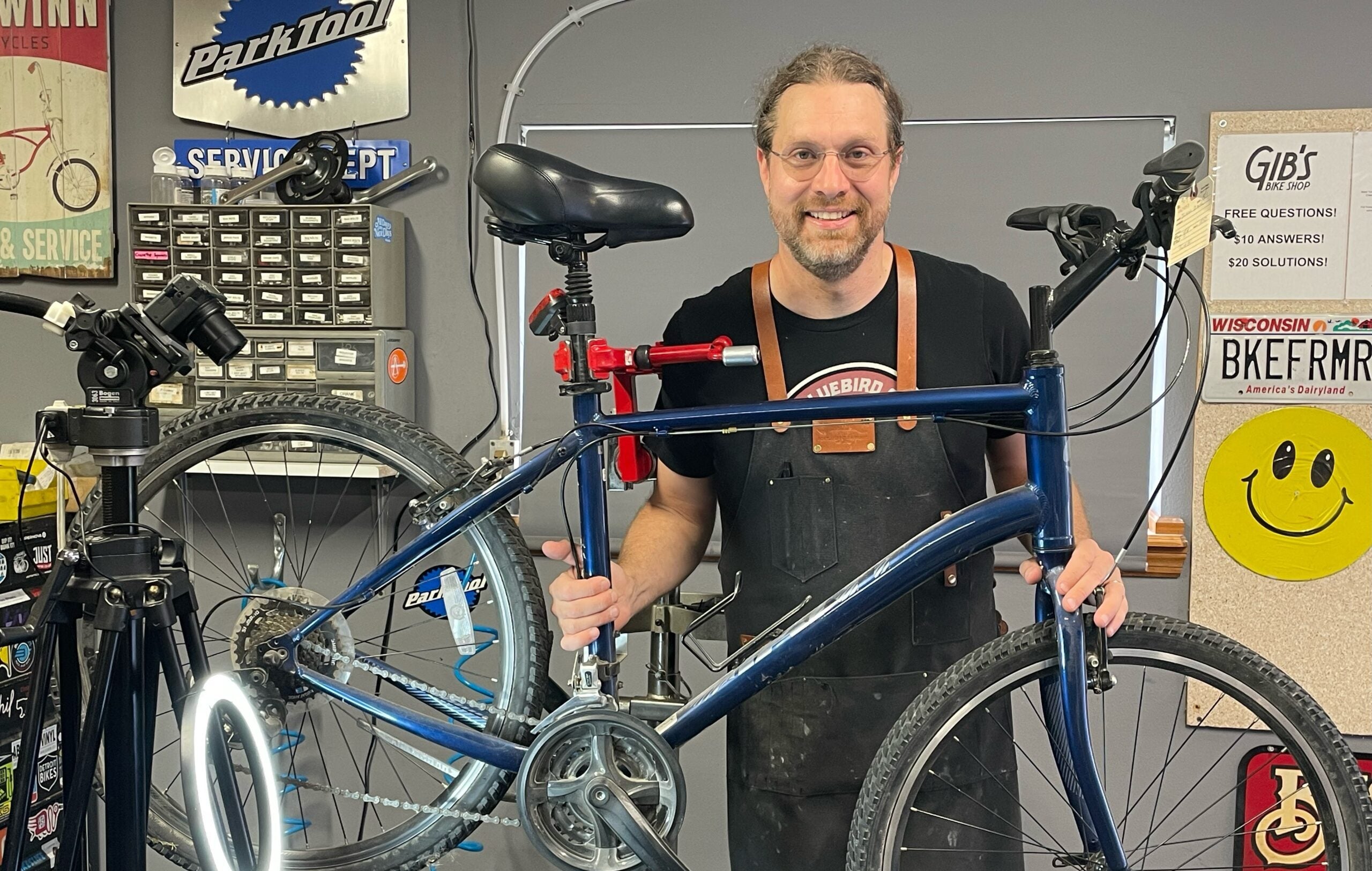As the weather warms up and you look for ways to get out of the house and get some fresh air and exercise, biking has likely come to mind.
But is your bike ready to hit the road? And, do you know what to do if you get a flat tire on a ride?
While tuning up your bike on your own may seem intimidating, there are easy maintenance practices every bike rider should know.
Stay informed on the latest news
Sign up for WPR’s email newsletter.
Brent Baumann and Dale Oestreich, of 2 Rivers Bicycle and Outdoor, said to turn to the ABC checklist.
“You want to do these before every ride,” Baumann said. “Understand that everything is tight, your tires are aired up, the chain looks good and you can stop when you need to.”
Baumann and Oesterich shared their checklist and other maintenance tips.
- Air: Inspect your tires before every ride. Look at air pressure and also check the tires for excessive wear or cracks on the sidewalls. Butyl inner tubes lose air much quicker than people realize and proper air pressure is important for ride quality, to prevent pinch flats and to protect the wheel itself. Recommended tire pressure is imprinted on the sidewall of the tire.
- Brakes: Grab each brake lever separately and try to roll the bike forward. Make sure both the front and rear brakes are functioning and you aren’t able to pull the lever all the way down to the handlebar. Inspect your brake pads for wear.
- Bars: Make sure your handlebars are tight and pointed in line with the front wheel. Tighten the handlebar bolt if needed, a multi-tool is great for this.
- Chain: Inspect the chain to ensure it’s not rusty and is free of debris and gunk.
- Crank: Make sure the cranks aren’t loose — these are the arms that connect to the pedals. If they are loose, the bike isn’t safe to ride. Tighten with your multi-tool or take to your local bike shop if you’re not sure how to address it.
Once your bike is ready for a ride, Baumann and Oestreich said to brush up on the basic maintenance practices every cyclist needs to know and prepare a ride kit so you don’t get stranded on longer rides.
Change A Flat Tire
Practice makes perfect, and it’s good to try this when you’re at home so you are comfortable in the event of a flat. You need to have a tube, tire levers to get that tire off and something to inflate the tire with, like a small hand pump.
Lube Your Chain
Bicycle chains need to be lubed every couple hundred miles or once a month. This helps them last longer and prevents them from rusting. If your chain is covered in gunk and debris, degrease it first before applying the lube.
Wash Your Bike
A clean bike is a happy bike and requires less maintenance and replacement of parts. There are a lot of great bike-specific cleaning agents, tools and brushes, but soapy water and a grout sponge will work, as well. Wet the bike down with a garden hose, wash all the dirt and grime off, and then rinse. Don’t use a high-pressure water setting, and be sure to avoid spraying directly into areas with bearings (bottom bracket, headset, the hubs).
Ride Kit
Carry some basics with you so you don’t get stranded on your ride. All of these items can fit in a small bag you attach to your bike (handlebar, behind saddle, trunk bag if you have a rack). The kit should include a:
- Spare inner tube, patch kit and tire levers for removing the tire in the event of a flat.
- Small hand pump or carbon dioxide inflator to add air to your tires.
- Bicycle multi-tool, preferably with a chain break, to tighten or make any adjustments while riding.
Wisconsin Public Radio, © Copyright 2025, Board of Regents of the University of Wisconsin System and Wisconsin Educational Communications Board.

